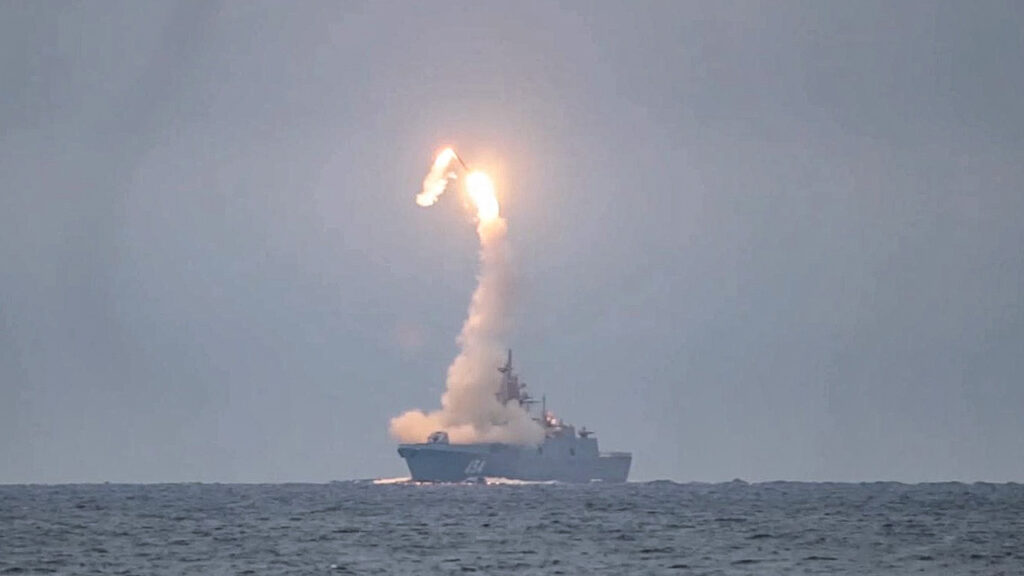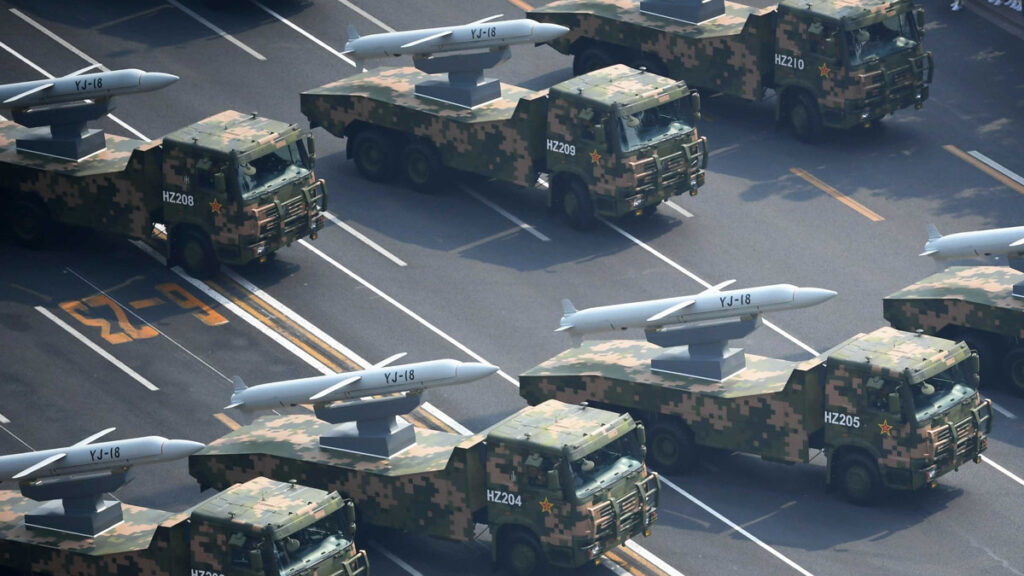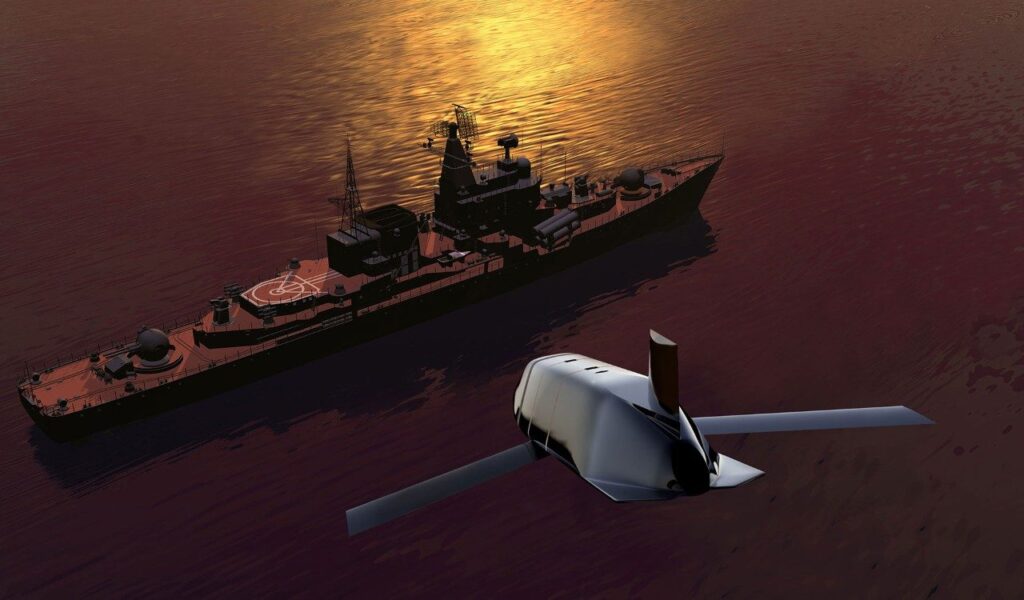Throughout history, several weapons have emerged and dominated the battlefield for decades. One such weapon is the aircraft carrier, a supercharged, mobile airbase. It has been the undisputed ruler of the open ocean for the previous 80 years. It also became a robust platform for bringing the battle to other countries, with scores of planes on board. Yet, throughout history, opponents have attempted numerous tactics to deal with it.
Typically, the carrier allows several dozen aircraft to operate from it. Three Nimitz carriers, for example, could supply airpower comparable to that of the entire Royal Air Force of the United Kingdom for a few months. Even one such carrier would pose a catastrophic threat to the majority of the world’s governments. And probably just a half-dozen countries on Earth could compete with the US Navy’s full carrier force to control their shore. Away from ground-based aircraft, the carriers are considerably more formidable in the open seas.
While enemy ships could reach them, the carrier’s scout aircraft would almost certainly identify and intercept them from hundreds of miles away. Without their airborne reconnaissance, surface ships and their weaponry from the early 2000s were powerless.
Anti-Ship, Cruise, and Ballistic Missiles
Anti-ship missiles were heralded as the death of the aircraft carrier due to their speed improvement. At first, Mach two is reached, and then Mach three is achieved in certain situations. However, defenses improved as well, with longer-range planes and improved radars. As a result, the missile threat persists today. Missiles are becoming increasingly quicker. The latest Russian Tsirkon missile is capable of exceeding Mach 9 when used in a high-altitude attack profile. That would imply a top speed of roughly Mach 4 at low altitude. On the other hand, there is the proliferation of ballistic anti-ship missiles, which are unconcerned with low-level concealment and instead threaten the carrier with brute force. They are so quick, have long-range, and have few detachable warheads that they can be difficult to track during the midcourse flight stage.

The defenses of a carrier have historically proven inadequate against such high-speed targets, which can swoop down to the sea at speeds exceeding Mach 10. Classical defensive systems such as the ESSM are ineffective against such targets since interception would occur too late, and even fragments of the warhead would destroy the carrier. As a result, intercepting such missiles is best accomplished from considerably higher altitudes, away from the page. Thus, on US carriers, sophisticated, expensive missiles such as the SM-3 are deployed.
This is a cost-cutting exercise in some ways, as anti-ship ballistic missiles are similarly priced, making them prohibitive in large quantities. At some point, the adversary may launch a more significant number of missiles than the defender can intercept. However, whether it is a feasible scenario for the attacker – a fleet of warships equipped with dozens of such massive anti-ship missiles – remains to be seen.
Smaller ballistic missile
The Chinese are reportedly developing a smaller ballistic missile that will fit into their existing destroyers, but such a missile is unlikely to travel much further than 500 miles. Novel technologies such as hypersonic glide warheads maintain that danger, but they are not always a game-changing notion. Compared to similar-class ballistic warheads, they sacrifice some speed for increased maneuverability, making them more difficult to hit, resulting in the requirement for additional radars and interceptor missiles to defend the carrier.

Loitering anti-ship missiles
Another option to deal with the carrier’s uncertain position is to employ loitering anti-ship missiles. They are now intelligent enough to classify the contacts they get and recognize the airline on their own. The US LRASM is one such missile. Because it is sluggish and subsonic, it has a reasonably long range. In theory, it can fly out several hundred miles and then spend the next half hour hunting for a prospective target using its superior sensors. However, the US missile is insufficiently big to counter defenses such as the US’s carriers. Other countries may be building comparable but larger missiles that can go up to 1000 miles from their launch location and then spend an hour searching for targets. Thus far, all of this is speculative, as neither China nor Russia has indicated they possess such missiles. However, such would undoubtedly be within their technological capabilities within the next decade.

Satellites
Satellites are one of the emerging dangers to the carrier today. Unfortunately, most governments lack the resources necessary to maintain a large and capable recon satellite fleet. However, two nations do—the United States of America versus the carriers of other countries. Additionally, China is pitted against US carriers.
China has been significantly increasing the size of its reconnaissance satellite force. It recently surpassed the US in terms of operating surveillance satellites. Today, we are witnessing the advent of low-cost, small-size satellites. The dozens occasionally launch them. And dozens or hundreds of such constellations are planned in the future—a commercial satellite equipped with synthetic aperture radar imaging for commercial purposes. China also launched its first geostationary optical reconnaissance satellite with exceptional resolution. Geostationary meaning that it rotates with the Earth’s rotation and hovers over a region, peering down the entire time. For the time being, it is primarily a demonstration software applicable to meteorology. As mentioned above, from such distances, the satellite is likely to have difficulty recognizing targets the size of carriers. However, as the Airbus group asserted, the technology required to build such acceptable-grade satellites is near. Even if a satellite half the size of the one in the Airbus research is made, it will be more than capable of identifying and tracking contacts larger than a carrier. However, small satellite flocks may be much more beneficial. These flocks will almost certainly pose a more significant threat to carriers than any single piece of missile technology. Naturally, missiles would still be required to attack the ship.

Nuclear Submarines
As a result, the carrier may need to maintain a greater distance from hostile launch sites. However, it seems unlikely that it would be able to outpace submarines. True, subs can ambush any ship and have done it previously with carriers. However, typical substitutes were inefficient and limiting. As a result, they are unable to seek out and pursue carriers aggressively. Currently, only the US nuclear submarine fleet is large enough to pose a continual threat to enemy carriers operating on the high seas. However, Russian and Chinese sub fleets may expand in size during the next few decades. Thus, not only are they a menace to US carriers, but they are also tying up a significant portion of the US submarine fleet in anti-submarine tasks.
Carriers may be compelled to avoid shallow waters. Nonetheless, when small satellite flocks become prevalent, which is expected to happen within a decade or two decades, submarines will be able to get updates on carrier positions. And would spend significantly less time wandering. They might be efficiently dispersed and utilized throughout the ocean. In theory, even a small force of 12 nuclear submarines might pose a danger to a carrier force the size of the United States.

Conclusion
Thus, while none of the technologies discussed above will put an end to carrier use, when combined, they will have a substantial impact on how carriers are utilized. With carriers being harder to hide and being faced with more and more threats, they will have to keep farther and farther back. That will eventually impact the way the carriers are used compared to today.
Check out Naval Library App to find out more about the specifications of the aircraft carriers.

















Comments